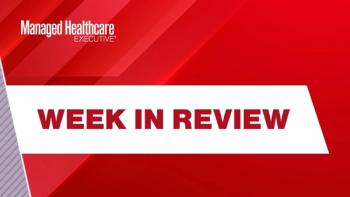
Medicare for All: Four Things Health Executives Should Know
No longer a pipe-dream of fringe policy makers, Medicare for All is gaining serious support-and criticism. Here’s what you need to know about the current conversation.
Medicare for All is a proposal that would give all Americans access to healthcare coverage. “The federal government would dictate the terms of the coverage (i.e., the amount of reimbursement for a service or the number of days of coverage for a specific service) and regulate it,” says Christopher J. Kutner, JD, a partner in the law firm Rivkin Radler LLP.
On February 26, more than 100 Democrats in the U.S. House of Representatives announced support for a “Medicare for All” bill, whose chief sponsor is
Several U.S. Democratic lawmakers have introduced different versions of expanded Medicare or will likely do so. It is expected that Senator Bernie Sanders (I-VT) will reintroduce his bill, which had 16 co-sponsors in the previous session, says Hector De La Torre, executive director of the nonprofit
Some of the versions may be a “clean” Medicare for All bill that expands Medicare nationwide into a single payer system; a Medicare buy-in bill that would allow anyone to purchase Medicare while retaining employer-based coverage for others; and a Medicare over 50 bill that would allow individuals between ages 50 and 65 to buy into a Medicare plan while retaining employer-based coverage for others, De La Torre says.
Here are four other things that health executives should know about Medicare for All.
1. House support is growing
A new Medicare for All caucus in the House already has 77 members. In the midterm elections, many Democratic candidates ran and won on a promise to fight to provide all Americans with access to government-run healthcare, Kutner says. All of the likely 2020 Democratic nominees support the idea, too.
2. Private insurance isn't going anywhere
If a Medicare for All healthcare system was employed, some private health insurers would most likely still exist. Despite predictions that private health insurers would cease to exist after the enactment of the ACA in 2010, for-profit health insurers such as United Healthcare and Anthem have continued to prosper-with their stocks rising every year. “I expect those companies to continue to diversify their offerings, moving away from at-risk fully insured products into MedAdvantage plans, Managed Medicaid, and other government-funded plans,” says C. Timothy Gary, JD, MBA, chief executive officer,
Related:
Kutner believes some consumers will be willing to pay for additional healthcare coverage and access. In New Zealand, for example, citizens can buy private insurance for treatment in private hospitals, which is desired if they wish to get treated faster, or for non-covered treatments.
Canada doesn’t have private care available, but citizens still have insurance for amenities such as private rooms or services the government doesn’t cover. “This would likely also occur in the United States, where private insurance would most likely be available for individuals who want the best physicians, hospitals, and specialty facilities,” Kutner says.
3. Cost estimates are far reaching
The Mercatus Center at George Mason University issued a study in July 2018 which calculated that the Medicare for All plan proposed by Senator Bernie Sanders would
4. Most Americans support it
The vast majority of Americans, roughly 70%, support Medicare for All, according to a new
Karen Appold is a medical writer in Lehigh Valley, Pennsylvania.
Newsletter
Get the latest industry news, event updates, and more from Managed healthcare Executive.

















































